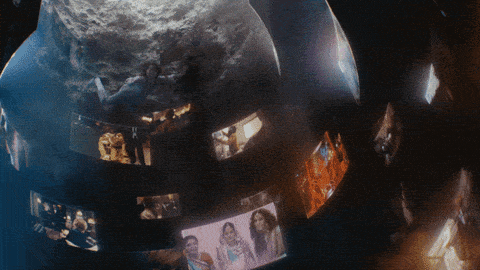Open Worldbuilding
(This artifact is a work in progress, which I’ll expand over time)
💡Open Worldbuilding is a simple framework for engineering your own rabbit holes using Artifacts to quickly immerse Explorers into your world.

Open Worldbuilding is the single most powerful framework I’ve found to build your world in a way that markets to your fan base and entertains them at the same time…
This way worldbuilders like us can spend more time doing what you love most — creating and building our world and less time “promoting” it.
This is a simple but highly scalable framework for engineering your own rabbit holes to attract Explorers and quickly get them lost in your world.
And you can turn all your world’s Lore into profits — sooner than later.
And his framework is not only for creative products (book series, movies, games, audio series, etc.) — it’s for so much more…
Open Worldbuilding is for intentionally engineering freely accessible rabbit-holes that new Explorers are more than happy to get completely immersed in.

Open Worldbuilding is for creating a world outside of products for these Explorers to scout, discover and inhabit — even before they are ever made aware of any products to buy.
Open Worldbuilding not a marketing after thought — it is an intentional strategy employed by worldbuilders who want to stand a chance at their tiny Micro-Worlds ever reaching Mega-World or even Iconic World status.
How Open Worldbuilding Works?
These are some of the patterns & foundational frameworks I’ve found when diving into our favorite Iconic Worlds:
- They focus 90% of time & energy on Explorers & Artifacts
- They apply The Iceberg Museum Framework
- They expand their worlds using Upgrading and Fan Demand
I’ll help guide you through all of these with evidence-based examples that are easy to understand and actionable.
And of course it all get’s deeper than this — much deeper and “funner”…

Artifacts leads down an endless rabbit-hole of real-world use-cases, tools, crafts and even more strategies for building your world, characters, settings, lore, etc.
Upgrading takes you down yet another rabbit-hole of sub-frameworks and strategies for guiding Explorers from simply browsing your world’s artifacts to becoming Mega-Fans. Upgrading also deals with the process of evolving artifacts from text to illustrations, blockbuster movies and even games…
The list goes on and on.
These are the core frameworks I’m finding to be present in some form or fashion in our favorite iconic and mega worlds.
And I aim to reverse-engineer every one of them for you in ways that are easy to understand and totally actionable.
Why Open Worldbuilding Always Wins?

For Explorers, it feels like the Open Worlds are create especially for them to enjoy and escape to — mainly because Open Worlds don’t sell anything (at least not up front).
To them — Open Worlds are just amazing, fun, fascinating places they’ll want to revisit often (or just plain get stuck in).
And it becomes a place they’ll share with their friends.
And a place that their friends will share with their other friends…
Open World Building removes all the friction and barriers that usually stop Explorers from entering your world in the first place — like asking strangers to Buy Your “Thing.”
There’s usually nothing there for them to buy (at least not on the surface outside of a “Products” page) so their guard is immediately lowered — then they become more susceptible to the world you’re trying to immerse them in.
And in these days, being Free & Open is not only rare, being Free & Open is a magical ability.
Worlds VS Universes:
To-may-to. To-mah-to.
For simplicity I use “World” instead of “Universe.”
So you’ll often see me say “The Marvel World” or “MCU’s World” instead of “Marvel Universe” and “Marvel Cinematic Universe (MCU)”.
Why?
1. It’s called Worldbuilding. Not Universebuilding… 😉
2. The words are synonymous:

3. For Simplicity’s Sake — It’s easier to use a one syllable “world” VS three syllables “universe”(or four syllables when plural)
4. I’d advise not to think too hard about which to use — go with what is most flexible and easiest to use — “world.”
Gotta give credit where credit is due…
This idea of Open World Building is heavily inspired by Andre Chaperon’s brilliant concept of “Open World Marketing”.

The groundwork he’s laid (and is laying still) in value first marketing, Tiny Assets, Tiny Businesses and Tiny Worlds is extraordinary and completely counterintuitive to what you’ve likely known or heard.
He opened my eyes to the idea of immersing Explorers into the world you’re building from the moment they make contact with your world.
Andre’s Tiny Worlds Manifesto makes this point crystal clear — it’s pure gold for those who like to nerd out on the marketing end of this stuff.
⚡Next Steps
Read my Iconic Worlds Primer Series to begin diving deeper into this evidence-based worldbuilding framework.
